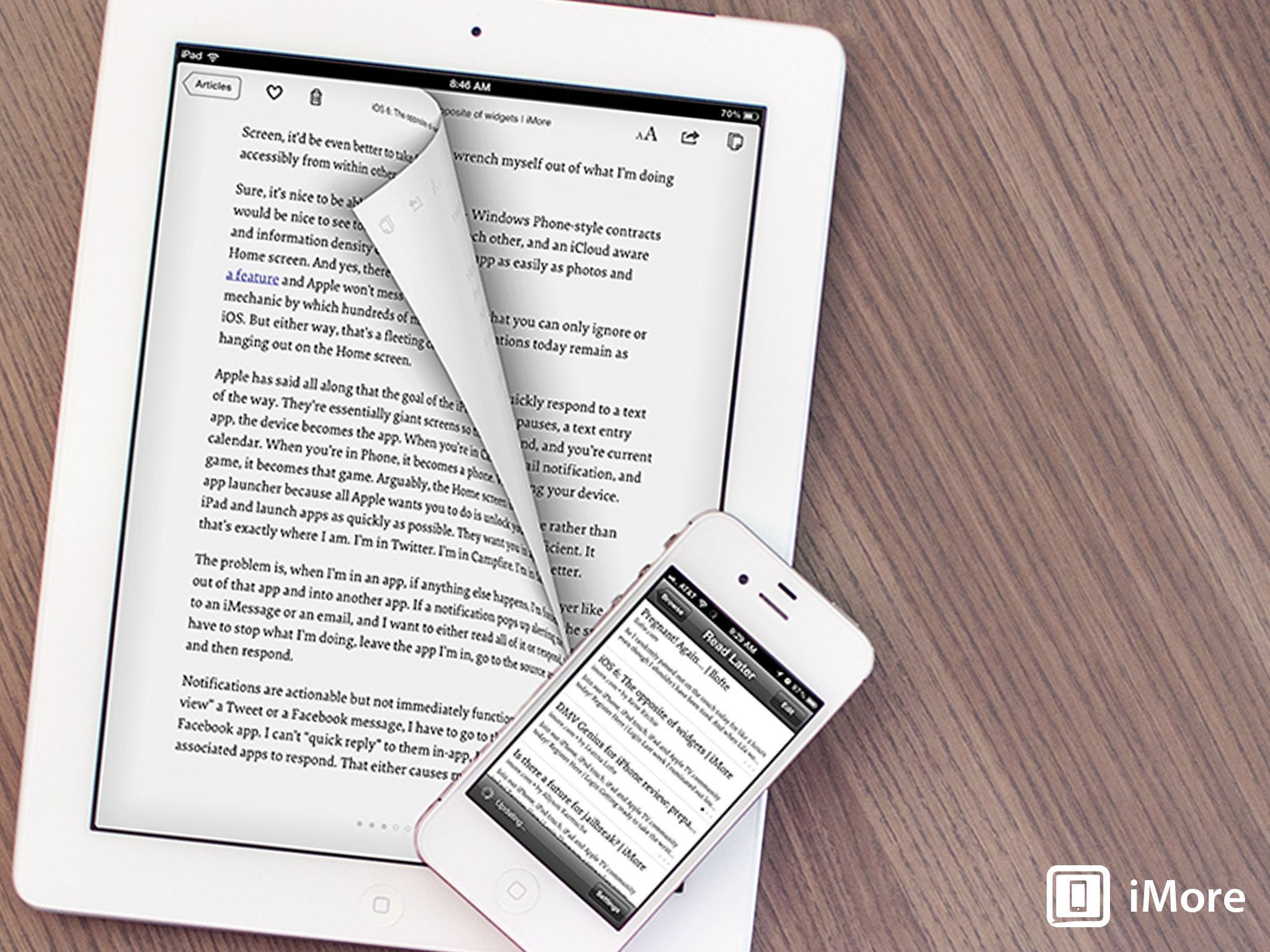Hall of fame: Marco Arment and Instapaper

Marco Arment first gained fame from Instapaper, a web service and iOS app that lets you save web articles to read later, at your leisure, or simply archive for potential future reference. Both before Instapaper, as the back-end architect behind the social blogging platform Tumblr, and after, as the founder of The Magazine, Arment's skills as a developer, and his thoughtfulness when it comes to user experience, helped shape the modern form of text-based content on mobile.
Back during the early days of Tumblr, Arment wasn't anywhere nearly as well known as he is today, yet millions of people depended on the servers and systems he set up and maintained. Following Tumblr's recent sale to Yahoo!, Arment wrote briefly about his time there on his blog, Marco.org:
In 2006, I moved to New York and started working for David Karp doing web development for various media companies. That fall, in a brief gap before starting a new client, David said that we were going to make a prototype of an idea he’d had for a while. He had already bought the domain: tumblr.com, because it was an easy platform for publishing tumblelogs.
Arment also appeared on several podcasts, including his own, and discussed his background and role at Tumblr as part of the greater conversation around its sale:
- Accidental Tech Podcast 14: Pouring Champagne Onto Rap Stars
- CMD+Space 48: A Fresh Start, with Marco Arment
- Bitsplitting With Marco Arment

While still at Tumblr, Arment began work on Instapaper. His purpose seemed simple: to remove any and all cruft from web-based articles and store them in a way that was both optimized for reading and easily accessible from web and mobile. Thousands upon thousands of decisions, however, came between simple in concept and elegant in execution.
- $3.99 - Download now
Time named Instapaper one of the 10 best iPhone apps of 2008, saying:
Sometimes the simplest tools are the handiest. This one lets you send articles you find online directly to your phone. Set up an account on Instapaper.com, then download the app from the iTunes store onto your iPhone. It took developer Marco Arment more than 100 hours to create this tool, but it will take you just a few seconds to start using it. Whenever you're at your computer and find a story or blog entry you want to read later, just click a button in your Web browser and the story will be waiting on your iPhone the next time you're stuck in line at the store.

Since Instapaper debuted with the App Store, Arment was able to observe and participate in many of the early and ongoing trends in the industry, including downward price pressures, and the challenges of maintaining a free version of a paid app in lieu of a demo. From Marco.org:
Maybe you think there aren’t enough people willing to pay $5 for an app with no free version. I used to think that, too. But I was wrong.I’ve made a lot of assumptions in the app market over the last three years that turned out to be wrong. Most frequently, I underestimate demand, both for my product and for others.
Arment poured an incredible amount of time and effort into the usability of Instapaper, including reproducing Apple's iBooks-style page turn animation, implementing a geo-fenced based workaround for background content refresh, and dozens of other, smaller things like the ability to undo scroll-to-top. Arment also frequently discussed his preferences and priorities of Instapaper, its features, and interface on his first podcast, Build and Analyze, as well as on other shows.
iMore offers spot-on advice and guidance from our team of experts, with decades of Apple device experience to lean on. Learn more with iMore!
- Build and Analyze archive
- Iterate 28: Marco Arment and Instapaper
On April 25, 2013, Arment announced that he was selling Instapaper to Betaworks. From Marco.org:
Instapaper is much bigger today than I could have predicted in 2008, and it has simply grown far beyond what one person can do. To really shine, it needs a full-time staff of at least a few people. But I wouldn’t be very good at hiring and leading a staff, and after more than five years, I’d like an opportunity to try other apps and creative projects. Instapaper needs a new home where it can be staffed and grown, but I didn’t want to give it to a big company that would probably just shut it down in six months.
Arment also discussed the sale on the Quit podcast, and on his own show, ATP.

On October 11, 2012, months before he sold Instapaper, Arment launched his second major app, The Magazine. It leveraged Apple's Newsstand technology to not only offer a subscription-based periodical, but to try and shake up a market filled with terrible InDesign PNG exports by offering a true, digital native experience. The Magazine wasn't as much about technology as it was for technologists.
- Free with subscription - Download now
In the original forward to the first issue, posted on The Magazine website [via Archive.org], Arment said:
Instead of the traditional labor-intensive magazine layout and expensive multimedia production, The Magazine’s article format is similar to Instapaper’s: one clean, adjustable, reader-friendly template with HTML, occasional images, and some small conveniences. It loads quickly, integrates well with sharing and system conventions (including text selection and VoiceOver), occupies minimal storage space, and shows the utmost respect for your time and attention.The Magazine is leaving behind a lot of what magazines “need”. And many magazines really do need them. But I don’t think this does.
John Gruber of Daring Fireball, on the subject of The Magazine's launch, noted:
Says a lot about the state of the magazine industry that things like loading quickly and allowing you to select text make the app stand out from the crowd. I predict a bunch of you are about to find Newsstand useful for the first time.

Along with the design team at Pacific Helm, Arment iterated it quickly. He also hired Glenn Fleishman to serve as executive editor, a role Arment was less interested in fulfilling himself. Arment later sold The Magazine to Fleishman entirely. Arment commented on the sale on Marco.org
The actual development required now is minimal, so I’ve been handling the business overhead of The Magazine without doing much of the kind of work I actually enjoy. I accidentally built a business that I’m not very well-suited to run. Glenn’s doing almost everything already, so I’m effectively a figurehead.
Arment further elaborated on his reasons for selling The Magazine on his podcast, ATP:

Although still working on his third major app, Arment most recently released Bugshot, a quick way to annotate and share iOS screenshots. From Marco.org:
Bugshot’s sole purpose is dealing with those screenshots better: being a home for them, making it easier to find them (rather than browsing your entire Camera Roll, interspersed with photos), and making it fast and easy to draw big orange annotations on them so it’s clear what needs attention.
- $0.99 - Download now

He has not sold Bugshot or ATP. Yet.
His willingness to try new things, to not ask permission or fear endeavors he has no background or experience in was the subject of Arment's talk at Çingleton 2012:
I've had the pleasure of knowing Marco since we were being scolded, as children, for spending too much time inside on the computer during the summertime. While impressive doesn't begin to describe his entire body of work, Instapaper in particular stands out. It is, like so many great ideas, so obvious once someone explains it to you. Time-shifting web content much like a DVR time-shifts video content? Take my money.
In typical Marco style, however, things didn't stop there. I vividly remember watching his demonstration video of tilt scrolling. It was another facepalm moment–of course you would want to scroll by tilting, rather than giving your thumb RSI as you read.
The thing that makes me most proud of Marco, however, is that Instapaper was his baby. It was his work, through and through. While other projects–including our podcast for example–are a shared effort, this one was just him. I know he had help here and there, but the overwhelming majority of the work was Marco. His work at Tumblr piqued the world's attention; Instapaper captured it. Well, in our little nerd world, anyway.
Marco is not one to call himself a visionary, but his career has been defined by looking at a situation, and finding the obvious, no matter how well hidden it may be; the "retroactively obvious" if you will. That makes Marco a visionary in my book.
Instapaper changed the way we look at reading on the Internet. It is, at worst, slight hyperbole to say that Instapaper changed the way we look at the Internet.Casey Liss, co-host of ATP
Marco Arment, through his work on Instapaper and The Magazine managed to not once but twice revolutionize the consumption of written material on mobile. His relentless drive to not only breathe bold, new life into old, broken media models but to constantly optimize and improve user experience not only changed expectations, but redefined them. Mobile promised great content, when and where we want it. Arment helped deliver on that promise, and the most amazing thing is - he's probably going to do it again.
That's why, as part of the 2013 hall of fame, we're honoring Marco Arment, Instapaper, and all his big apps, past, present, and future.

Rene Ritchie is one of the most respected Apple analysts in the business, reaching a combined audience of over 40 million readers a month. His YouTube channel, Vector, has over 90 thousand subscribers and 14 million views and his podcasts, including Debug, have been downloaded over 20 million times. He also regularly co-hosts MacBreak Weekly for the TWiT network and co-hosted CES Live! and Talk Mobile. Based in Montreal, Rene is a former director of product marketing, web developer, and graphic designer. He's authored several books and appeared on numerous television and radio segments to discuss Apple and the technology industry. When not working, he likes to cook, grapple, and spend time with his friends and family.
